Yala's Prime Visiting Seasons
Plan your trip with insights on the best time to visit Yala National Park in Sri Lanka. Learn about the optimal seasons for wildlife viewing and enjoying outdoor activities.
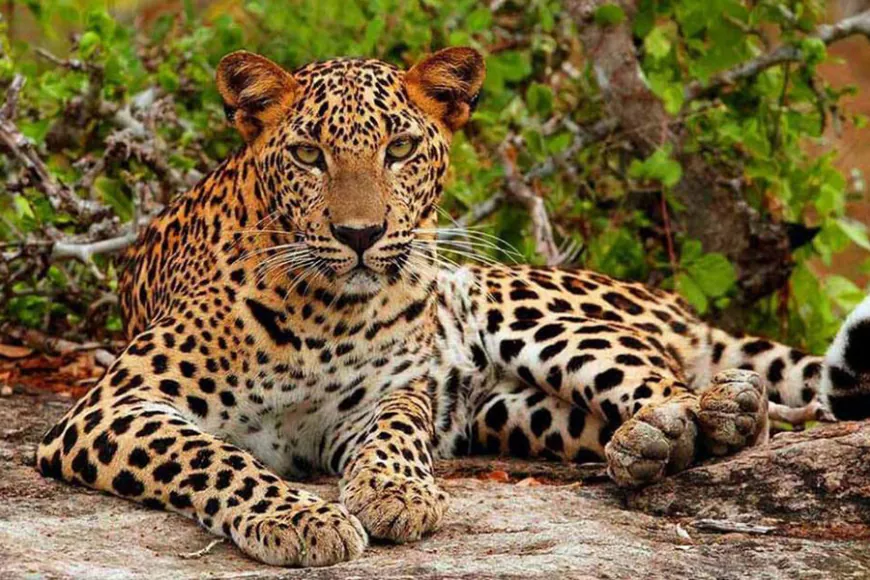
-
Yala's Diverse Wilderness
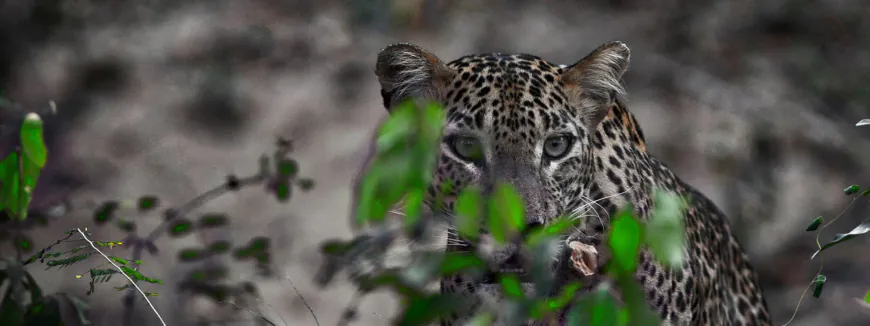
Yala National Park, renowned for its diverse wildlife and high leopard density, offers unique experiences throughout the year. According to experts, the best time to visit is generally from February to July during the dry season, when lower water levels make wildlife spotting easier around waterholes.
Yala National Park, located in southeastern Sri Lanka, is the country's most visited and second largest national park, covering an area of 979 square kilometers (378 sq mi). Bordering the Indian Ocean, the park spans across the Southern and Uva Provinces. Yala was initially designated as a wildlife sanctuary in 1900 and later established as a national park in 1938, making it one of Sri Lanka's first two national parks along with Wilpattu.
The park is divided into five blocks, with two currently open to the public. It also adjoins other protected areas, including Kumana National Park (also known as Yala East) and Lunugamvehera National Park. Yala's landscape is characterized by a variety of ecosystems, including moist monsoon forests, dry monsoon forests, semi-deciduous forests, thorn forests, grasslands, freshwater and marine wetlands, and sandy beaches.
Yala National Park is renowned for its rich biodiversity and is considered one of the 70 Important Bird Areas (IBAs) in Sri Lanka. The park is home to 215 bird species, including six endemic to Sri Lanka, and 44 recorded mammal species. Notably, Yala boasts one of the highest leopard densities in the world, making it a prime destination for leopard sightings.
The park's diverse habitats support a wide range of wildlife, including Sri Lankan elephants, sloth bears, water buffalo, wild boar, spotted deer, sambar, and golden jackals. Yala is also an important conservation area for Sri Lankan elephants and aquatic birds.
In addition to its ecological significance, Yala National Park holds cultural and historical importance. The park area contains evidence of ancient civilizations, including two important Buddhist pilgrim sites: Sithulpahuwa and Magul Vihara. These archaeological sites offer visitors a glimpse into the region's rich cultural heritage alongside its natural wonders.
Yala's climate is characterized as hot and semi-arid, with temperatures ranging from 26°C to 30°C. The park receives most of its rainfall during the northeast monsoon season, which occurs from September to December.
-
Seasonal Wildlife Patterns
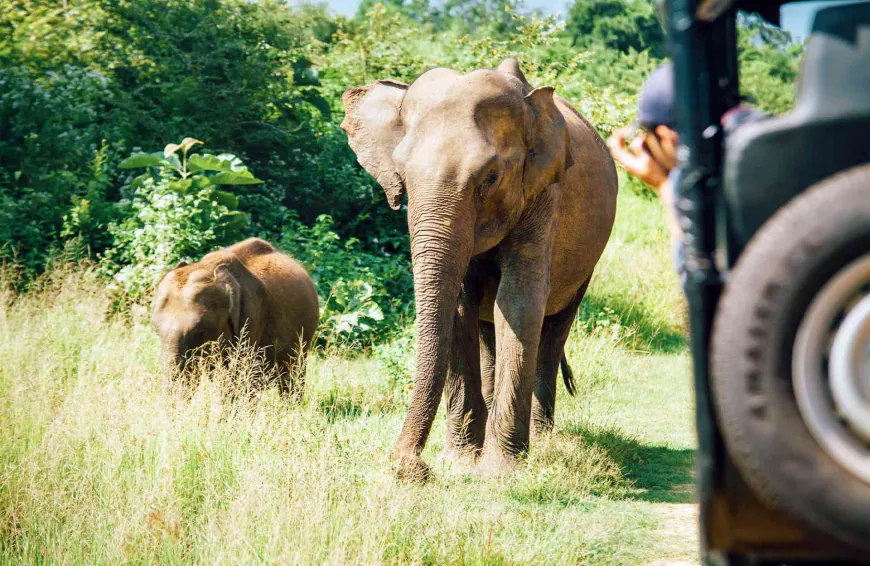
The timing of your visit to Yala National Park can significantly impact your wildlife viewing experience. Different seasons offer unique opportunities to observe various animal behaviors and ecological changes. Here's an overview of the seasonal changes in Yala and their importance for visitors:
Season Months Characteristics Wildlife Opportunities Dry Season February - July Low water levels, animals congregate at waterholes Best for leopard sightings, easier wildlife spotting Palu Fruit Season August Palu trees bear fruit Increased sloth bear sightings Rainy Season November - January, April Lush vegetation, possible park closures Migratory birds arrive, elephants more visible Inter-monsoon March - April Unpredictable showers, park becomes green Good for elephant herds, migratory birds still present Late Dry Season July - September Park becomes dusty, water sources shrink Animals concentrate around remaining water sources The dry season (February to July) is generally considered the best time for wildlife viewing, especially for leopard sightings. The low water levels force animals to gather around remaining water sources, making them easier to spot. However, each season offers unique experiences:
During the Palu fruit season in August, visitors have a higher chance of spotting sloth bears as they come out to feast on the fruit. The rainy season, while potentially challenging for travel, brings lush vegetation and the arrival of migratory birds. This period is also good for elephant sightings.
The inter-monsoon period in March and April offers a mix of experiences, with unpredictable showers creating a green landscape. This time is excellent for observing elephant herds and catching the last of the migratory birds before they depart.
In the late dry season (July to September), the park becomes dusty, and water sources shrink further. While this can make the landscape less picturesque, it concentrates animals around the remaining water sources, potentially offering unique viewing opportunities.
It's important to note that Block 1, the most popular area of Yala, typically closes in September for restoration. During this time, visitors are directed to other blocks or nearby parks like Lunugamvehera National Park, which can offer different but equally rewarding experiences.
Regardless of the season, Yala National Park remains open year-round, with each period offering its own set of wildlife viewing opportunities and natural phenomena. Visitors should consider their specific wildlife interests and tolerance for weather conditions when planning their trip to Yala.
-
Seasonal Safari Highlights
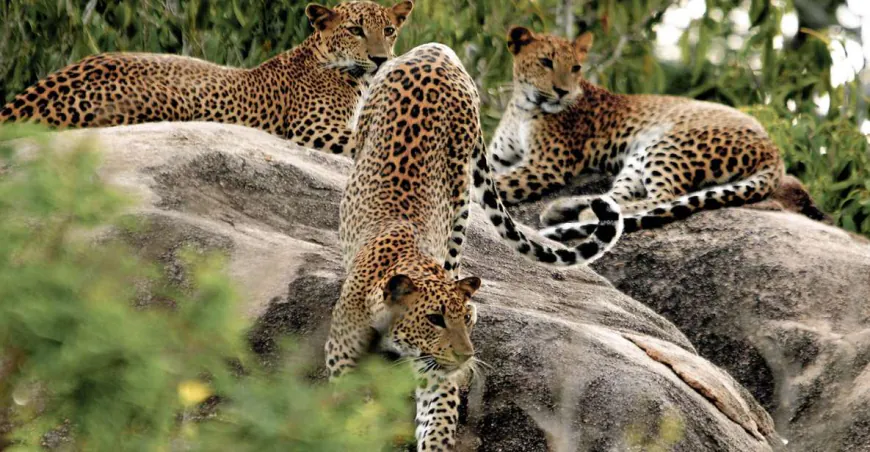
The seasonal changes in Yala National Park significantly impact wildlife behavior and viewing opportunities. Here's a breakdown of the key highlights for the dry and monsoon seasons:
Season Advantages Considerations Dry Season (February - June) - Easier wildlife spotting due to sparse vegetation - Hot and dry weather (20-33°C) - Animals congregate around water sources - More crowded, especially December to March - Ideal for leopard sightings, especially in February and March - Advance booking recommended - Better road conditions for safari vehicles Monsoon Season (September - December) - Lush, green landscapes ideal for photography - Reduced visibility due to dense vegetation - Arrival of migratory birds - Possible park closures, especially in September - Fewer tourists, more peaceful safari experience - Challenging road conditions - Cooler temperatures - Unpredictable weather with heavy rainfall The dry season offers optimal conditions for wildlife viewing, particularly for spotting the park's famous leopards. As water sources become scarce, animals are forced to gather around remaining waterholes, making them easier to observe. This period is especially favorable for leopard sightings, with February and March being the peak months. However, the dry season also brings more tourists, particularly from December to March, making advance bookings essential.
In contrast, the monsoon season transforms Yala into a lush, green paradise, offering unique photographic opportunities. This period welcomes migratory birds, adding to the park's already rich avian diversity. While the dense vegetation can make wildlife spotting more challenging, patient observers may be rewarded with unique sightings. The monsoon season also sees fewer tourists, allowing for a more serene safari experience. However, visitors should be prepared for possible park closures, especially in September, and challenging road conditions due to heavy rainfall.
Each season in Yala National Park offers distinct advantages and considerations for visitors, catering to different interests and preferences in wildlife viewing and nature experiences.
-
Wildlife Viewing Hotspots
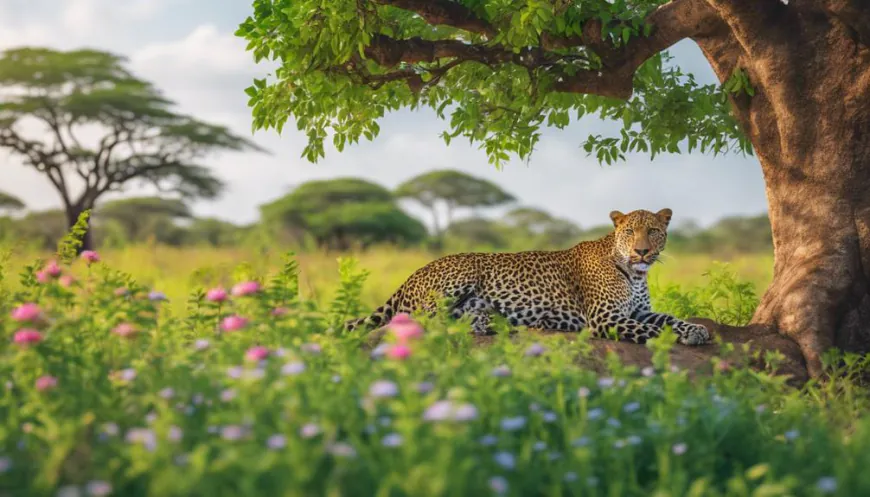
Understanding the peak months for animal sightings and the migration and breeding patterns in Yala National Park can significantly enhance your wildlife viewing experience. Here's a detailed breakdown of the best times to observe various species:
Species Peak Viewing Months Migration/Breeding Patterns Leopards February - June - Most active during early mornings and late afternoons - Breeding can occur year-round, but peaks in dry season Elephants May - September - More visible as they gather around water sources in dry season - Breeding occurs year-round Sloth Bears May - July - Most active during palu fruit season - Breeding season typically December to June Migratory Birds November - April - Arrive during North East monsoon - Breeding season for resident birds varies by species Crocodiles October - December - More visible during cooler months - Nesting season typically June to July Deer Species Year-round - More easily spotted in dry season around water sources - Breeding peaks during inter-monsoon periods Leopards, Yala's star attraction, are best observed from February to June. During these months, the dry conditions force prey to congregate around limited water sources, increasing leopard activity in these areas. Early mornings and late afternoons offer the best chances for leopard sightings.
Elephant herds become more visible from May to September as they gather around shrinking water bodies. This period provides excellent opportunities to observe their social behaviors and interactions.
For sloth bear enthusiasts, May to July is the ideal time. This coincides with the palu fruit season, drawing these usually elusive creatures out to feed.
Birdwatchers should plan their visits between November and April to witness the arrival of migratory species. This period aligns with the North East monsoon, creating favorable conditions for a diverse array of bird life.
Crocodile sightings peak from October to December when cooler temperatures make them more active and visible. This period also offers good opportunities to observe their basking behaviors.
While deer species can be seen year-round, they are more easily spotted during the dry season as they frequent water sources. Their breeding activities tend to intensify during the inter-monsoon periods, offering chances to witness interesting mating behaviors.
It's important to note that while these patterns are generally consistent, wildlife behavior can be unpredictable. Factors such as climate change and human activities can influence animal movements and behaviors. Therefore, visiting Yala with an experienced guide can greatly enhance your chances of memorable wildlife encounters, regardless of the season.
-
Climate Impact on Wildlife
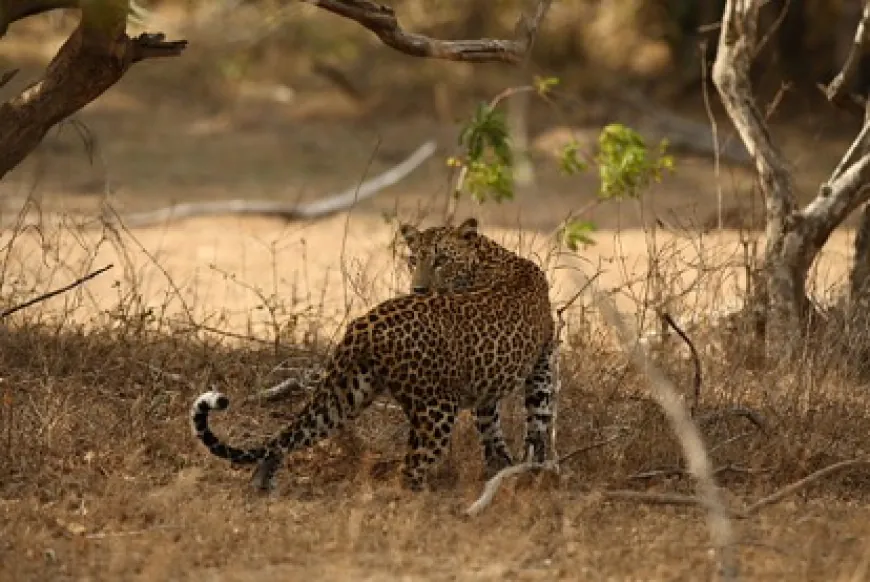
Yala National Park experiences a semi-arid climate with distinct temperature and rainfall patterns throughout the year. Understanding these weather patterns can help visitors plan their trips more effectively and prepare for the conditions they may encounter.
Month Avg. Temperature (°C) Rainfall (mm) Humidity (%) January 25-30 89 75 February 26-31 39 73 March 27-32 52 73 April 27-32 109 75 May 27-31 81 77 June 27-30 20 77 July 27-30 16 76 August 27-31 24 75 September 27-31 58 76 October 26-30 156 78 November 25-29 265 80 December 25-29 227 79 Yala National Park maintains relatively consistent temperatures throughout the year, with average temperatures ranging from 25°C to 32°C (77°F to 90°F). The hottest months are typically March and April, while December and January tend to be slightly cooler. Despite the generally hot climate, visitors should be prepared for cooler temperatures in the early mornings and evenings, especially during wildlife drives.
Rainfall patterns in Yala show significant variation throughout the year. The park experiences two monsoon seasons: the northeast monsoon from October to January and the southwest monsoon from May to July. November is typically the wettest month, receiving an average of 265 mm (10.4 inches) of rainfall. In contrast, the driest months are June, July, and August, with July receiving the least rainfall at an average of just 16 mm (0.6 inches).
Humidity levels in Yala remain relatively high throughout the year, typically ranging from 73% to 80%. The highest humidity is usually experienced during the northeast monsoon season, particularly in November and December. Even during the drier months, the park's proximity to the coast contributes to maintaining moderate humidity levels.
These weather patterns significantly impact wildlife behavior and viewing opportunities. During the dry season (February to July), animals tend to congregate around water sources, making them easier to spot. However, the landscape can become dusty and less photogenic. The wetter months (October to January) transform the park into a lush, green environment, which is visually striking but can make wildlife harder to spot due to denser vegetation.
It's worth noting that while these patterns are generally consistent, climate change may be influencing weather patterns in the region. Visitors should check current forecasts and be prepared for some variability in conditions.
-
Seasonal Visitor Essentials

Visiting Yala National Park requires different preparations depending on the season. Here's a guide to help you pack appropriately and stay safe during your visit:
Season Packing Tips Safety Precautions Dry Season (Feb-Jul) - Light, breathable clothing - Stay hydrated - Wide-brimmed hat - Avoid midday sun exposure - High SPF sunscreen - Follow guide instructions closely - Insect repellent - Reusable water bottle - Binoculars Monsoon Season (Sep-Dec) - Waterproof jacket - Be cautious on slippery roads - Quick-dry clothing - Watch for flash floods - Waterproof bag for electronics - Check for park closures - Sturdy, waterproof shoes - Umbrella Inter-monsoon (Mar-Apr) - Mix of dry and wet season items - Be prepared for sudden weather changes - Layers for temperature changes - Check weather forecasts regularly For the dry season, lightweight, breathable clothing is essential to combat the heat. A wide-brimmed hat and high SPF sunscreen are crucial for sun protection. Don't forget to pack a reusable water bottle to stay hydrated, as temperatures can soar during midday. Binoculars are highly recommended for wildlife viewing, especially for spotting elusive leopards.
During the monsoon season, waterproof gear becomes indispensable. A good quality waterproof jacket and quick-dry clothing will keep you comfortable during sudden downpours. Waterproof bags for your electronics are essential to protect them from moisture. Sturdy, waterproof shoes are necessary for navigating potentially muddy terrain.
For the inter-monsoon period, it's best to pack a mix of items suitable for both dry and wet conditions. Layered clothing is ideal for adapting to temperature changes throughout the day.
Regardless of the season, insect repellent is a must-pack item to protect against mosquitoes and other insects.
Safety precautions are crucial in all seasons. During the dry season, staying hydrated and avoiding prolonged sun exposure are key. In the monsoon season, be cautious of slippery roads and potential flash floods. Always follow your guide's instructions closely, as they are familiar with the park's conditions and wildlife behavior.
Year-round, it's important to respect wildlife and maintain a safe distance. Never attempt to feed or approach animals, and remain inside the vehicle during safari drives. Be aware that Yala is home to potentially dangerous wildlife, including elephants and leopards, so always prioritize safety over photo opportunities.
Lastly, check for any park closures or alerts before your visit, especially during the monsoon season when certain areas may become inaccessible. By following these recommendations, you can ensure a safe and enjoyable visit to Yala National Park, regardless of the season.
-
Seasonal Safari Experiences
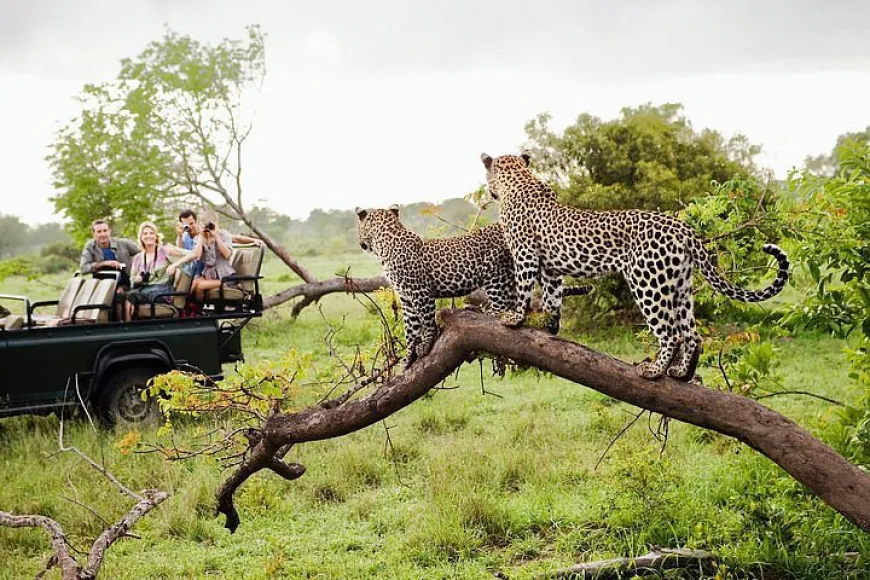
Yala National Park offers a variety of seasonal events and activities throughout the year, enhancing visitors' experiences beyond wildlife viewing. Here's an overview of notable festivals and recommended activities for each season:
Dry Season (February - July)
Events:- Vesak Festival (May) - Buddhist celebration with lantern displays in nearby towns
- Poson Festival (June) - Commemorates the arrival of Buddhism in Sri Lanka
Activities: - Early morning and late afternoon game drives for optimal wildlife viewing
- Birdwatching tours, especially for resident species
- Guided walks in designated areas (with park permission)
- Photography safaris to capture animals in their natural habitat
Monsoon Season (September - December)
Events:- Kataragama Festival (July/August) - Hindu and Buddhist pilgrimage event nearby
- Adam's Peak pilgrimage season begins (December)
Activities: - Landscape photography tours to capture lush greenery
- Birdwatching for migratory species
- Cultural tours to nearby archaeological sites (when accessible)
- Boat safaris on Kumana wetlands (weather permitting)
Inter-monsoon Period (March - April)
Events:- Sinhala and Tamil New Year celebrations (mid-April)
Activities: - Combined wildlife and cultural tours
- Night safaris in buffer zones (with special permits)
- Elephant watching at gathered herds
- Stargazing tours on clear nights
Year-round Activities:
- Jeep safaris (morning and afternoon)
- Guided nature walks in designated areas
- Educational programs at the Yala visitor center
- Camping in designated areas (with proper permits)
It's important to note that some activities may be subject to weather conditions and park regulations. Visitors should always check with park authorities or tour operators for current availability and safety guidelines. Additionally, participating in local festivals and events can provide a deeper understanding of the cultural significance of the Yala region, enhancing the overall experience of visiting the national park.
-
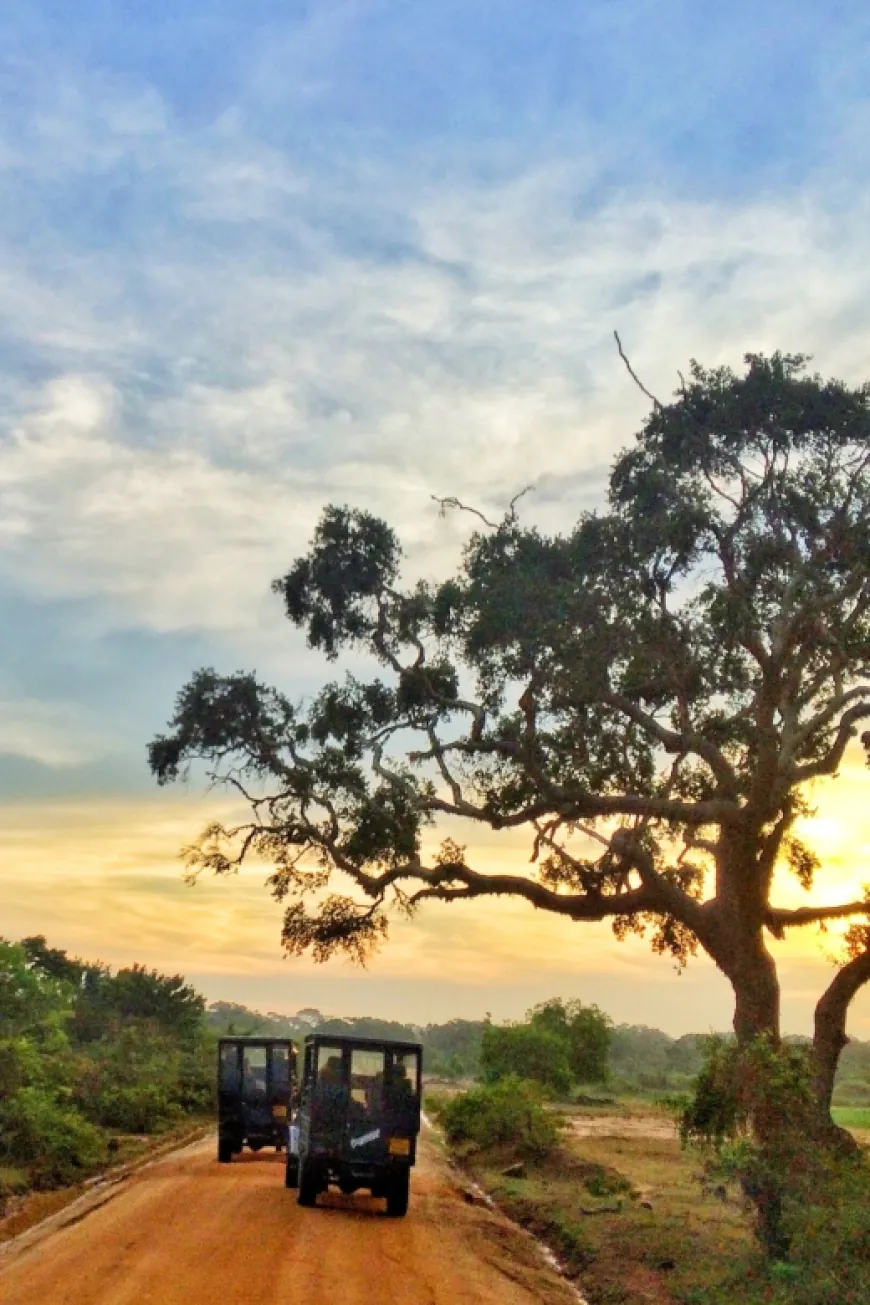
Yala National Park offers unique experiences throughout the year, with each season providing distinct opportunities for wildlife viewing and nature exploration. Here's a recap of the best times to visit based on different interests:
Wildlife viewing:
- February to July (dry season) - Best for leopard sightings and general wildlife spotting
- August - Ideal for sloth bear sightings during palu fruit season
- May to September - Excellent for elephant observations
Birdwatching:
- November to April - Peak season for migratory birds
- Year-round - Diverse resident bird species
Photography:
- Dry season (February-July) - Clear visibility and animals congregating at water sources
- Monsoon season (September-December) - Lush landscapes and dramatic skies
Avoiding crowds:
- May to August - Less tourist traffic, especially in June
- September to October - Park may be partially closed, but other blocks offer quieter experiences
When planning your visit to Yala National Park, consider the following:
- Align your trip with your primary interests, whether it's leopard spotting, birdwatching, or landscape photography
- Be flexible with your itinerary to accommodate weather changes and animal behavior
- Book in advance for peak seasons (December to March) to ensure accommodation and safari availability
- Consider visiting during shoulder seasons for a balance of good wildlife viewing and fewer crowds
- Prepare appropriately for the season, packing suitable clothing and gear
Remember that wildlife viewing is unpredictable, and each visit to Yala offers unique experiences. Whether you choose the dry season for optimal animal sightings or the lush monsoon period for dramatic landscapes, Yala National Park promises an unforgettable safari adventure. Plan according to your interests, but remain open to the surprises that nature may offer during your visit.
-
Frequently Asked Questions
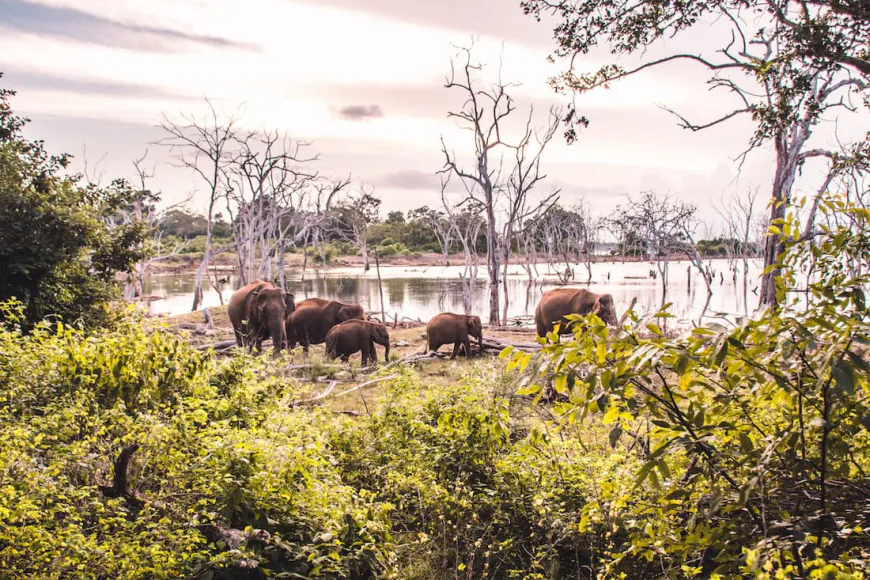
Frequently Asked Questions (FAQs) about Visiting Yala National Park
What is the best time of year to visit Yala National Park?
The best time to visit is generally from February to July during the dry season. This period offers optimal wildlife viewing opportunities, especially for leopard sightings.How long should I plan to stay in Yala?
A 2-3 day stay is recommended to fully experience the park. This allows for multiple safari drives and increases your chances of diverse wildlife sightings.Are there accommodation options inside Yala National Park?
Yes, there are several accommodation options ranging from luxury resorts to camping sites. Some popular choices include Wild Coast, Chena Huts, and Cinnamon Wild Yala.What animals can I expect to see in Yala?
Yala is home to various wildlife including leopards, elephants, sloth bears, crocodiles, water buffalo, and numerous bird species. Leopard sightings are particularly notable in Yala.Do I need a guide for visiting Yala National Park?
While not strictly required, a guide is highly recommended. They can help spot animals, explain behaviors, and ensure you follow park regulations.Is it safe to visit Yala National Park?
Yes, it's generally safe when following park rules and guide instructions. Always remain in your vehicle during safaris and maintain a safe distance from wildlife.What should I pack for a visit to Yala?
Essential items include lightweight, breathable clothing, sun protection (hat, sunscreen), insect repellent, a reusable water bottle, and binoculars. Waterproof gear is recommended during the monsoon season.Can I visit Yala National Park year-round?
Yes, Yala is open year-round, but some blocks (like Block 1) may close in September for maintenance. Different seasons offer varied experiences and wildlife viewing opportunities.How much does a safari in Yala cost?
Safari costs can vary, but expect to pay around 65 USD per person for a guided tour. Prices may be higher during peak seasons.Are there any cultural sites to visit in or near Yala?
Yes, the park area contains archaeological sites like Sithulpawwa Temple, an ancient Buddhist monastery dating back over 2,000 years.Remember to check current park regulations and booking requirements before your visit, as these may change seasonally or annually.
-
Connect With Yala
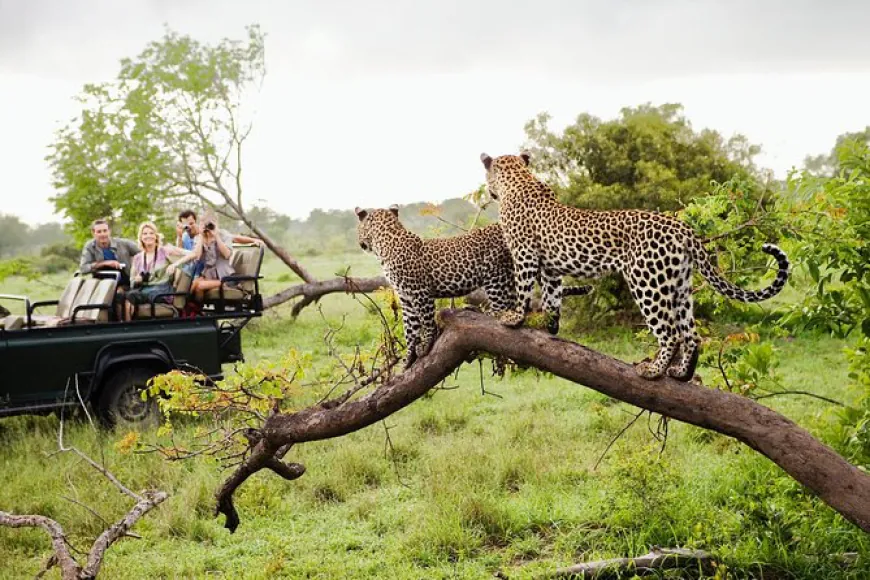
Yala National Park offers a wealth of experiences for wildlife enthusiasts and nature lovers. To enhance your visit and stay updated on the latest park news and travel tips, consider the following:
Contact us for more information:
Email: [email protected]
Phone: +94723456726
Website: yalalk.comStay connected:
- Join our newsletter for regular updates on wildlife sightings, seasonal highlights, and special offers.
- Follow our official blog for in-depth articles on Yala's ecosystem, conservation efforts, and travel guides.
- Share your Yala experiences and photos on our social media platforms.
Engage with our community:
- Comment on our blog posts to share your thoughts and experiences.
- Participate in our online forums to connect with fellow wildlife enthusiasts and experienced Yala visitors.
Help spread the word:
- Share our articles and posts with friends and family interested in wildlife and nature conservation.
- Write reviews about your Yala experience to help future visitors plan their trips.
By staying connected and engaged, you'll not only enhance your own Yala experience but also contribute to a community of wildlife enthusiasts passionate about preserving this unique ecosystem. Don't hesitate to reach out - we're here to help make your Yala adventure unforgettable!
What's Your Reaction?








































